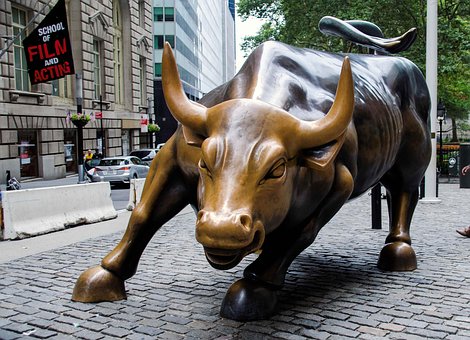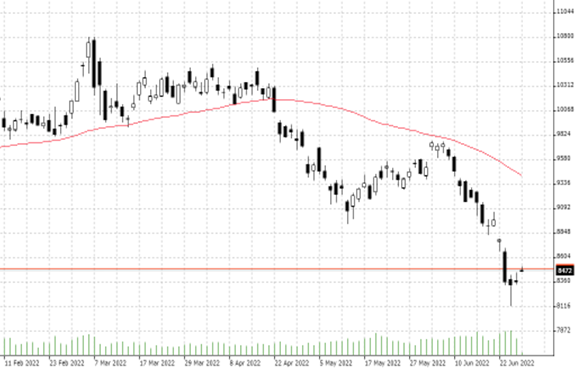

28.06.2022 – Legendary investor Michael Burry just sounded the alarm with a meager tweet that packs a punch: The founder of hedge fund Scion Asset Management warned of the so-called “bullwhip effect” in the retail sector. Soon, he said, there will be a supply glut, which in turn will lead to falling consumer prices later in the year. Eventually, he said, the Federal Reserve will reverse the interest rate hike it just started and end quantitative tightening.
Falling prices – deflation and economic crash. Stock market and commodity market collapse. If you follow this view, you should take a closer look at copper from the short side. Because the red metal can be found almost everywhere and is therefore a fabulous early economic indicator at the beginning of the production chain. Copper is used in electrical engineering, construction, medicine, mechanical engineering, arts and crafts, utilities and communications for furniture and musical instruments. And, by the way, also in the brass of cartridge cases, which are in high demand right now. In the spring, copper was trading at an all-time high of over $10,000 per ton, since then it has gone downhill to well below the 50-day line.

Source: Bernstein Bank GmbH
And so to the finer points: The Bullwhip Effect – also known as the Whiplash Effect – means that at the beginning of the whip, there is only a small ripple at the fist of the whip holder as it swings. However, this expands with each lunge – and at the end of the whip, the oscillations are enormous until the crack at the tip.
Misinterpretation of demand
Applied to retail, this means, roughly speaking, that small fluctuations in demand build up over the course of the supply chain – and that the economy is currently assuming that demand is far too large because of inflation in supply chain management. And that it is ramping up production too much. This is reinforced by the effect that retailers rely on large purchase volumes to extract discounts from manufacturers. If a customer also suspects rising prices, he will build up stocks that have little to do with the demand situation. And at some point, oversupply will follow. Ergo, in the worst case, bankruptcy of supermarkets, insolvency of manufacturers, bursting loans, tottering banks, unemployment, recession.
The Big Short II
Michael Burry is not just anyone: Before 2008, he and a handful of like-minded people bet on the bursting of huge amounts of bad financial derivatives backed by worthless mortgages – and on the overturning of investment banks that had bought these assets. Burry was right. Because he had research done on who had actually taken out all those oh-so-safe mortgages – strippers, for example, or homeowners who rented to the unemployed. In the Lehman crash, Burry became a billionaire. The saga was adapted into a book and a film under the title “The Big Short.
Price crash ahead?
We are curious to see if history repeats itself. In recent weeks, the financial blog “ZeroHedge” has also repeatedly warned of a “deflationary tsunami,” a wave of discounting and collapsing prices. Inflation, he said, is not a good indicator because it remains high, primarily because of food and energy. Our conclusion: whether you invest in the stock market or commodities, you should keep this warning in mind. Bernstein Bank wishes you good luck!
Important Notes on This Publication:
The content of this publication is for general information purposes only. In this context, it is neither an individual investment recommendation or advice nor an offer to purchase or sell securities or other financial products. The content in question and all the information contained therein do not in any way replace individual investor- or investment-oriented advice. No reliable forecast or indication for the future is possible with respect to any presentation or information on the present or past performance of the relevant underlying assets. All information and data presented in this publication are based on reliable sources. However, Bernstein Bank does not guarantee that the information and data contained in this publication is up-to-date, correct and complete. Securities traded on the financial markets are subject to price fluctuations. A contract for difference (CFD) is also a financial instrument with leverage effect. Against this backdrop, CFD trading involves a high risk up to the point of total loss and may not be suitable for all investors. Therefore, make sure that you have fully understood all the correlating risks. If necessary, ask for independent advice. CFDs are complex instruments and are associated with the high risk of losing money quickly because of the leverage effect. 68% of retail investor accounts lose money trading CFD with this provider. You should consider whether you understand how CFD work and whether you can afford to take the high risk of losing your money.7
